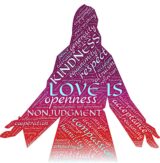the journey of the soul: understanding our eternal progression
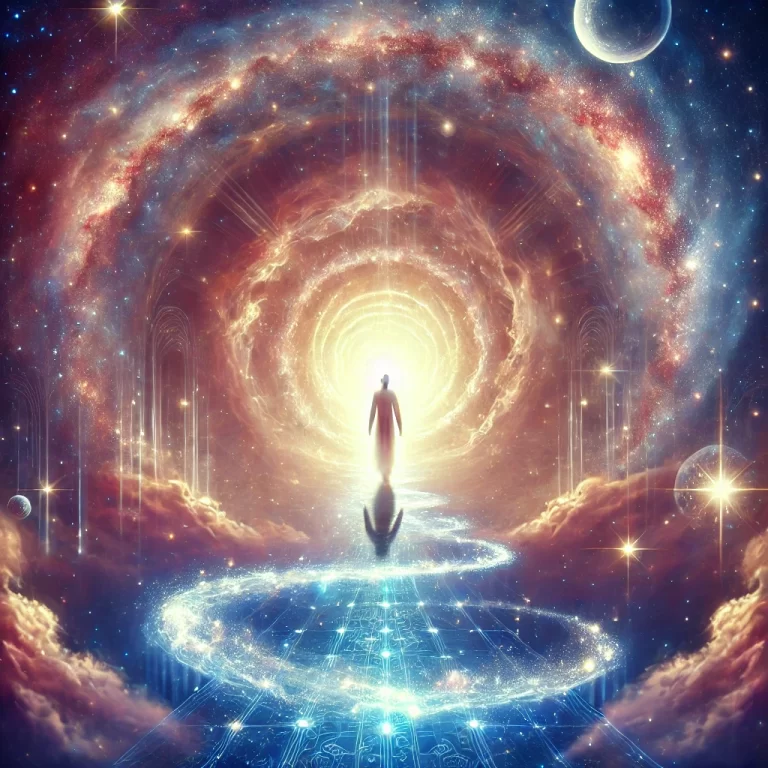
From the dawn of time, humanity has pondered the great questions of existence: Who am I? Where did I come from? Where am I going? The answers to these questions lie not in the material world but within the very essence of what we are—the soul.
The soul is not a fleeting concept or a poetic metaphor. It is the eternal core of our being, the blueprint of our consciousness, and the thread that weaves through the tapestry of lifetimes, shaping our experiences, lessons, and evolution. To understand the soul is to understand ourselves at the deepest level.
Yet, for millennia, we have been distracted—by the noise of the world, the weight of our traumas, and the limitations imposed by fear and forgetting. But the time has come to awaken. By recognizing the progression of the soul, we gain insight into the cycles of growth, the reasons for our struggles, and the profound potential that lies dormant within us.
This section explores the soul’s journey across time, from its origins beyond the stars to its earthly incarnations. It reveals how each experience—whether joyful or painful—serves as a stepping stone toward cosmic consciousness. Through this understanding, we can begin to free ourselves from the wounds of the past, embrace our divine purpose, and reclaim our place in the greater unfolding of the universe.
The mystical image at the above left captures the ethereal journey of the soul along a cosmic pathway, leading toward higher consciousness.
Let us step into the wisdom of the ages and rediscover the sacred path of the soul.
what is one's life force
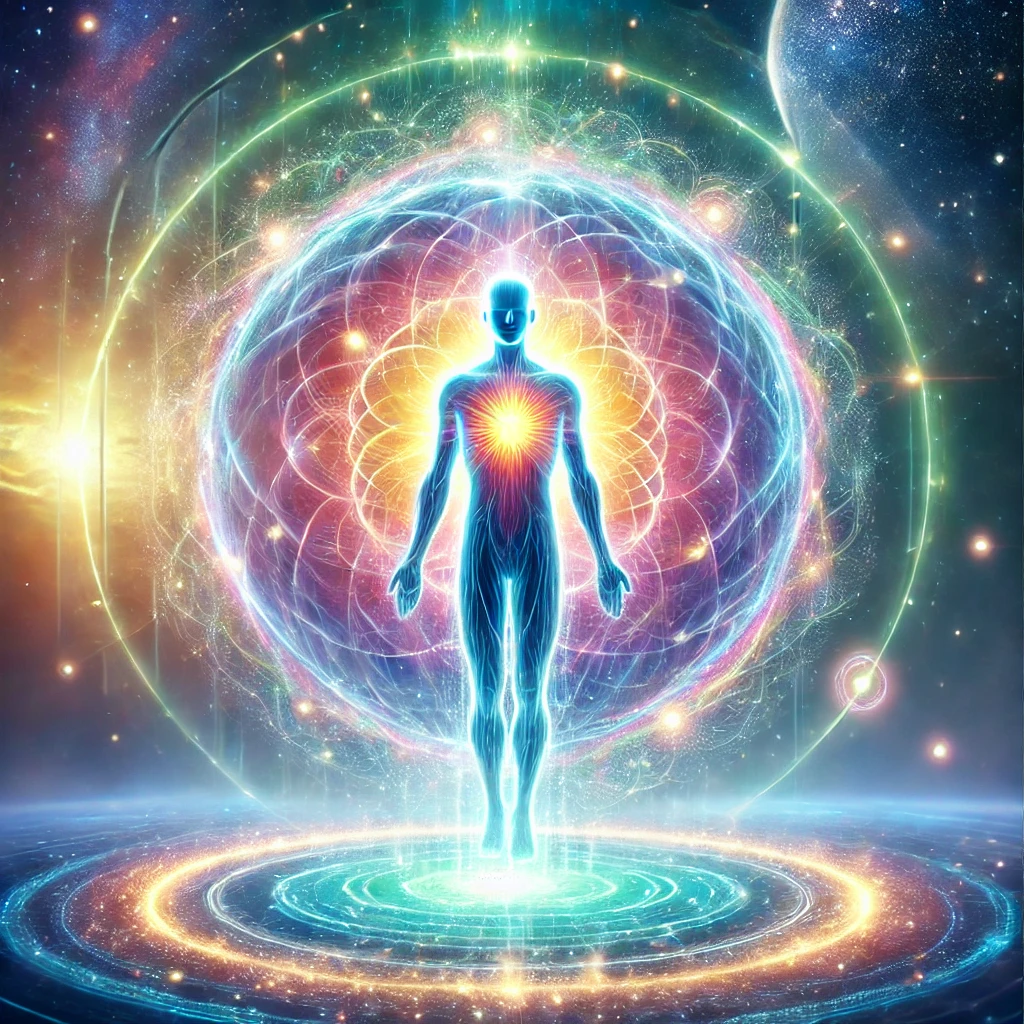
Within each of us burns an eternal flame, the life force—a vital energy that animates our physical form. It is the spark that causes the heart to beat, the lungs to fill with air, and the body to move with purpose. This life force is not merely biological; it is the current that connects us to the rhythm of the universe. When we are in harmony with this force, we feel vibrant, alive, and interconnected with the flow of existence.
AI generated the image of the life force, soul, and spirit as interconnected layers of a luminous being.
what is one's soul
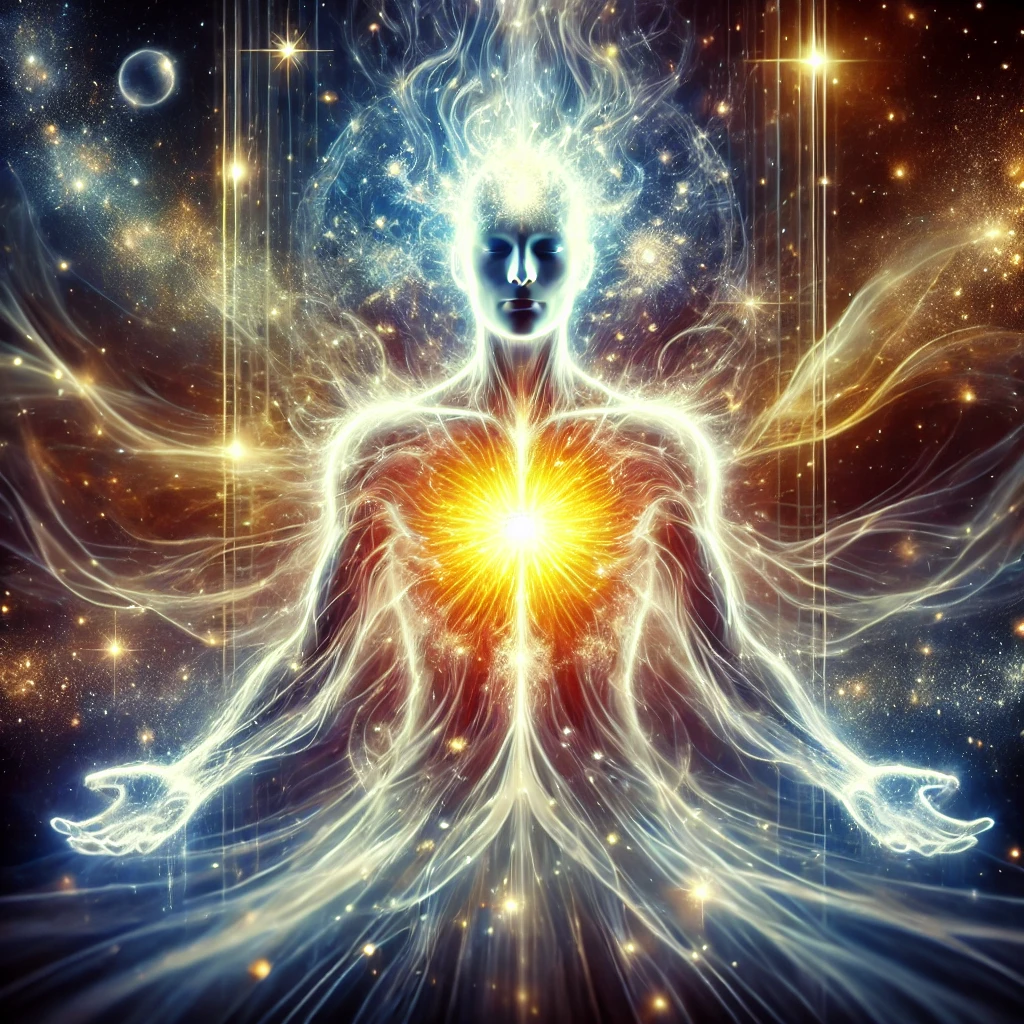
Beyond the life force lies the soul—the essence of who we are. It is timeless, transcendent, and unbound by the physical world. The soul carries the imprint of our deepest truths, our unique purpose, and the lessons we are meant to learn and share across lifetimes. It is the part of us that dreams, that hopes, that seeks meaning in the tapestry of experiences. The soul whispers to us in moments of stillness, reminding us of our higher calling and the beauty of our journey.
The image on the left is an AI rendering of the human soul.
what is one's spirit
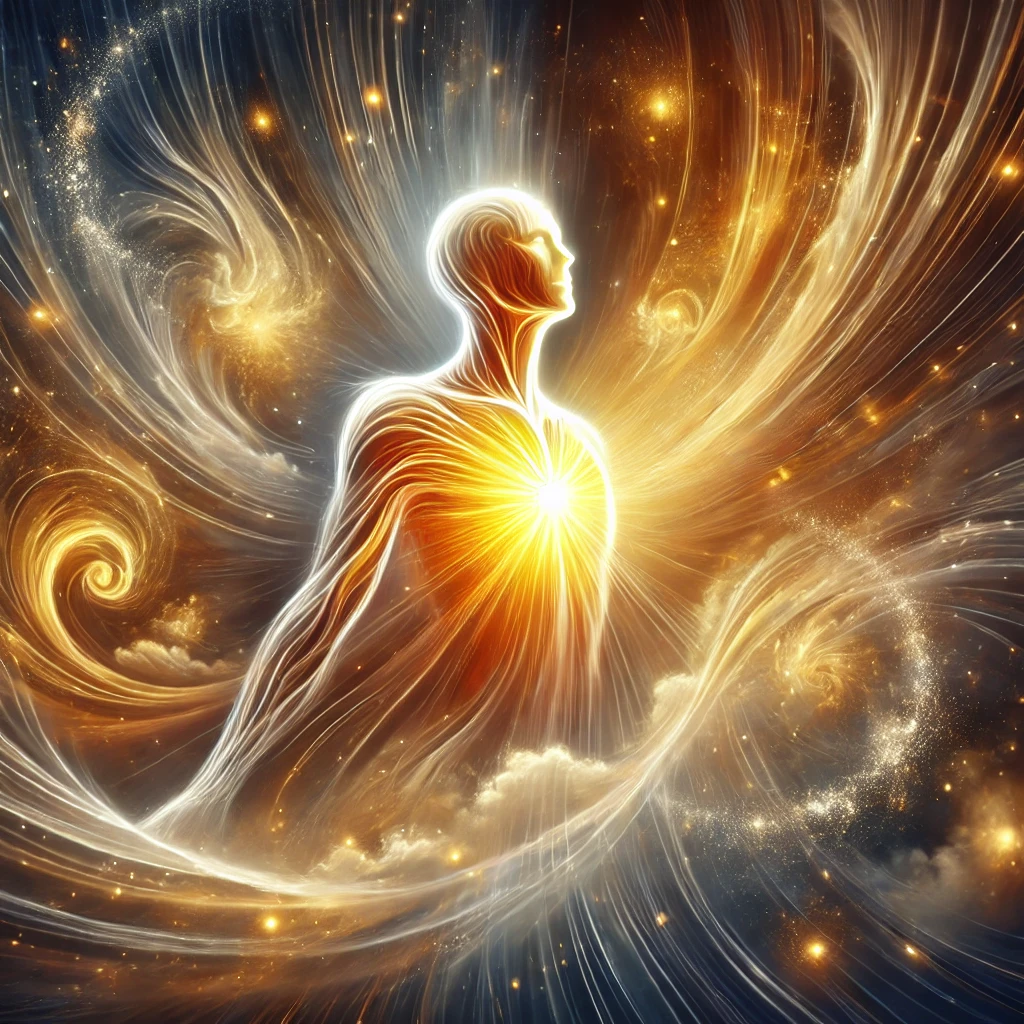
And then there is the spirit, the most expansive and luminous aspect of our being. The spirit is our connection to the divine, the infinite, the eternal source of all creation. It is the light within, the kingdom of heaven that Jesus taught us to seek. The spirit transcends individuality, linking us to all that is, all that ever was, and all that ever will be. It is the eternal witness, the source of unconditional love and wisdom that guides us when we turn inward to listen.
Together, these three elements—life force, soul, and spirit—create the profound symphony of our existence. The life force sustains us, the soul defines us, and the spirit connects us to the infinite. When they are aligned, we become luminous beings, capable of living with purpose, love, and a deep awareness of the sacred nature of all life.
The image on the left is an AI rendering of the human spirit.
In the stillness of our inner sanctuary, we can sense the interplay of these forces. The hum of the life force, the gentle resonance of the soul, and the radiant glow of the spirit remind us that we are more than flesh and bone. We are eternal travelers, sparks of the divine, awakening to the realization that within us lies the power to create, to love, and to transform.
What Is the Soul? Perspectives from World Religions
The concept of the soul existing in levels varies widely across spiritual, religious, and philosophical traditions. These levels often describe the soul’s depth, development, or aspects of its connection to the divine and material realms. Below are some interpretations from various traditions and perspectives:
Across cultures and centuries, the soul has been understood as the eternal essence of a being—a spark of divine consciousness that travels, evolves, and remembers. Below are key perspectives from major traditions:
Christianity: The soul is immortal, created by God, and judged after death. It carries one’s moral essence into the afterlife.
Judaism: The soul (neshama) is divine breath, returning to God. Kabbalah explores reincarnation (gilgul) as a soul’s journey through refinement.
Islam: The nafs (self or soul) is tested in life and purified through surrender to Allah. The soul endures beyond death, accountable and eternal.
Hinduism: The atman is the divine self, cycling through births (samsara) until union with the Absolute (moksha).
Buddhism: Rejecting a fixed soul, Buddhism teaches of a “stream of consciousness” reborn until enlightenment breaks the cycle.
Taoism: The soul is dual—hun (yang, spiritual) and po (yin, corporeal). After death, hun returns to the heavens, po to the earth.
Indigenous Traditions: Often view the soul as interwoven with nature, ancestors, and the spirit world—a living thread in a sacred web.
These lenses offer clues to the multidimensional nature of the soul: divine, evolving, and responsive across time.
Stages of the Soul’s Journey Across Lifetimes. As the soul incarnates, it matures—not unlike a human life, but across centuries and dimensions. Each stage holds its own lessons, illusions, and gifts:
| Soul Age | Primary Characteristics |
|---|---|
| Infant Soul | Rooted in survival. Tribal, reactive, with little moral or spiritual inquiry. |
| Young Soul | Focuses on ambition, success, ego mastery, material world domination. |
| Mature Soul | Begins inner life. Questions meaning. Learns empathy, complexity, and karma. |
| Old Soul | Detached from ego. Seeks truth, simplicity, deeper cosmic harmony. |
| Very Old Soul | Feels alien. Serves others. Remembers beyond Earth. Channels divine wisdom. |
Reflection Prompt: Which stage resonates with you now? Have you noticed echoes of earlier stages within this lifetime?
when bad things happen to good souls
Adverse Childhood Experiences (ACEs)
Understanding the Profound Impact of Adverse Childhood Experiences (ACEs) and PTSD Across Generations
Understanding the profound impact of Adverse Childhood Experiences (ACEs) and the development of Post-Traumatic Stress Disorder (PTSD) is crucial, particularly in the context of how trauma is transmitted across generations. Here’s an overview based on current research:
Adverse Childhood Experiences (ACEs)
ACEs encompass a range of potentially traumatic events occurring before the age of 18, including:
Experiencing violence, abuse, or neglect.
Witnessing violence in the home or community.
Growing up in a household affected by substance use disorders, mental health issues, parental separation, or the incarceration of a family member.
These early adversities can significantly disrupt a child’s development, leading to long-term mental and physical health challenges that may persist into adulthood.
Formation and Characteristics of PTSD
PTSD can develop following exposure to a traumatic event and is characterized by the following symptoms:
Intrusive memories or flashbacks.
Avoidance of reminders associated with the trauma.
Negative changes in thoughts and mood.
Heightened arousal and reactivity, such as hypervigilance—a constant state of alertness, anticipating potential threats.
As children grow older, many develop amnesia for the traumatic event, and the trauma becomes repressed at a subconscious level. However, the effects remain present, often manifesting as PTSD symptoms later in life.
Individuals with a history of ACEs face a significantly higher risk of developing PTSD, highlighting the long-term impact of early trauma.
Intergenerational Trauma
Intergenerational trauma refers to the transmission of trauma effects from one generation to the next. This can occur through:
Behavioral Patterns: Parents with unresolved trauma may inadvertently pass on maladaptive coping mechanisms to their children.
Genetic and Epigenetic Factors: Emerging research suggests that trauma can lead to epigenetic modifications, potentially altering stress responses in descendants.
Symptoms in subsequent generations often mirror those of PTSD, including anxiety, depression, and heightened stress responses—even in individuals who have not directly experienced the original trauma.
Addressing and Healing Trauma
Recognizing the pervasive impact of trauma is the first step toward healing. Trauma-informed care emphasizes understanding, recognizing, and responding to the effects of all types of trauma. Effective interventions may include:
Therapeutic Approaches: Evidence-based modalities such as Cognitive-Behavioral Therapy (CBT), Eye Movement Desensitization and Reprocessing (EMDR), and Somatic Therapy have been shown to aid in trauma recovery.
Community and Cultural Practices: Engaging in cultural rituals, storytelling, and community support systems can facilitate healing, especially for communities affected by collective historical traumas.
By addressing both individual and intergenerational trauma, we can break the cycle and cultivate resilience in future generations.
Who Holds the Trauma? Soul, Spirit, or Body?
To understand the soul’s progression, we must also confront what slows or shapes it: trauma. But where is trauma stored?
Genetic Blueprint (Body/Avatar): Trauma is encoded epigenetically. It lives in the nervous system, inherited from bloodlines, imprinted by this life’s experiences.
Spirit (Subtle Self): The spirit holds emotional patterns and relational echoes of past wounds. It draws familiar loops into this lifetime for healing.
Soul (Eternal Witness): The soul remembers trauma as archetypal memory—the deeper why. It holds the lesson, not the suffering.
True healing occurs when all three levels are acknowledged. The soul expands by transmuting the pain that once constrained it.
Spiritual PTSD may arise when unresolved trauma spans lifetimes, repeating until consciously cleared. The soul progresses when healing replaces reactivity with remembrance.
Understanding these dynamics is essential for developing effective interventions and support systems for individuals and communities affected by trauma across generations. By integrating trauma-informed care and community-based healing practices, we can foster long-term well-being and resilience.
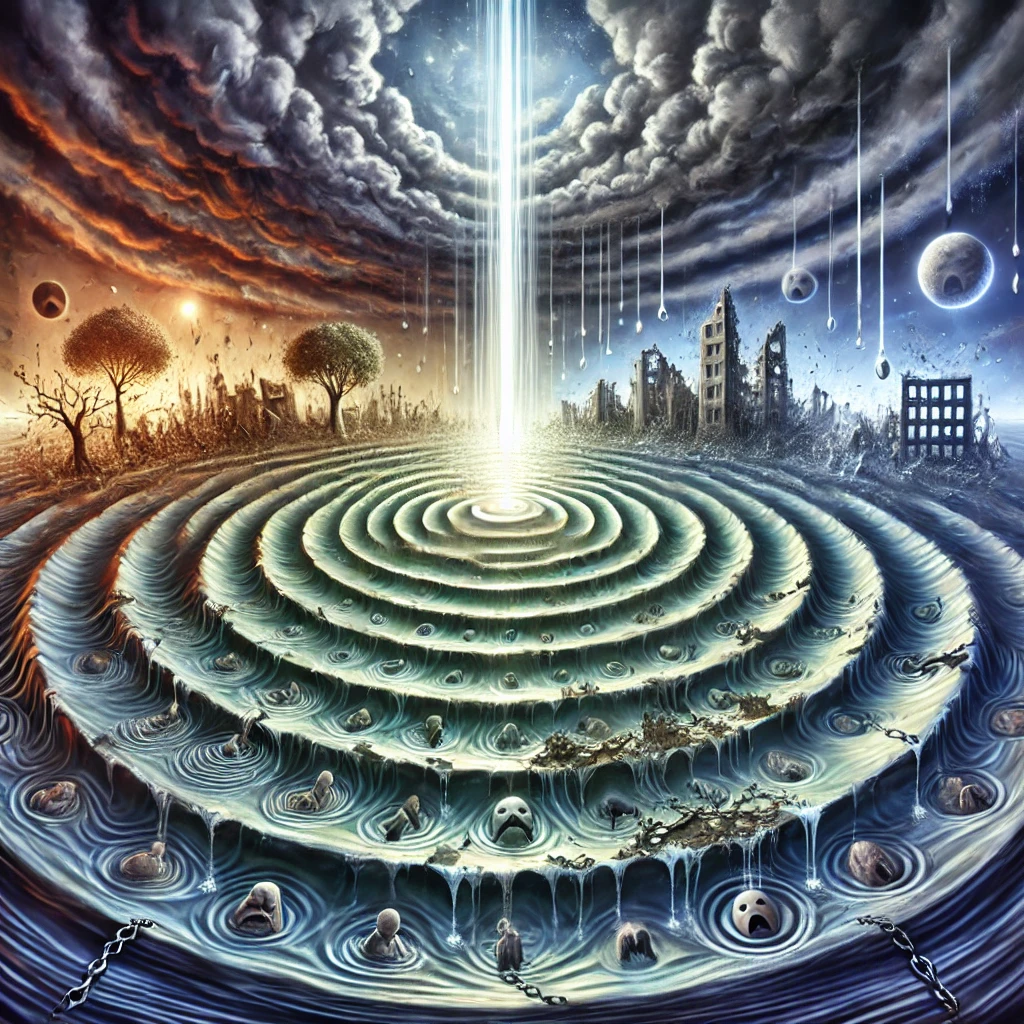
Ripple Effects of Trauma: The image on the left is a symbolic portrayal of how a single traumatic event spreads across generations, creating cycles of ACEs and PTSD. Amid the darkness of storm clouds, a beam of light represents hope, healing, and spiritual awakening.”
more questions about the soul
Do All Sentient Beings Have a Soul?
- Yes, in many spiritual traditions, it is believed that all sentient beings—those with the capacity for thought, feeling, and awareness—possess a soul. This includes not only humans but also animals, and sometimes even plants, depending on the system of belief.
- Hinduism, for instance, teaches that every being, regardless of its form, has an Atman (soul) that is connected to the universal consciousness (Brahman).
- Western philosophies, such as those derived from ancient Greek thought, sometimes posit that the soul is a unique feature of humans, but modern metaphysical systems often include other sentient beings as part of the soul continuum.
How Many Souls Are There?
- The number of souls is often seen as infinite, as souls are considered expressions of universal or divine consciousness.
- In traditions like Hinduism or Buddhism, there is no finite number of souls—rather, souls are seen as part of an eternal process of creation and transformation. They exist in a state of continuous rebirth and evolution.
- Some metaphysical perspectives suggest that every being is an aspect of the One or Source, and as such, the “number” of souls is not fixed but constantly in flux, expanding or contracting with universal cycles.
Where Do Souls Go Between Incarnations?
- Different traditions offer various names for the places where souls reside between incarnations:
- Buddhism: Souls exist in the Bardo, an intermediate state between death and rebirth, where the soul experiences a journey of purification or transition.
- Hinduism: Souls are said to reside in Samsara, the cycle of birth, death, and rebirth. During periods between lives, they may experience time in a higher state of consciousness or rest in a subtle body.
- New Age / Metaphysical: Many believe souls enter an afterlife or spiritual realm where they undergo healing, learning, and reflection before being reborn. This realm may be described as an ethereal plane, a divine realm, or a place where souls reconnect with the divine source.
What Is the Average Time Between Incarnations?
- The time between incarnations is typically not fixed and can vary greatly depending on individual spiritual progression. In Buddhism and Hinduism, the time between lives can range from a few days to several centuries, depending on the soul’s karma and level of spiritual awakening.
- In some metaphysical traditions, the time between incarnations is seen as an opportunity for a soul to rest and reflect on the lessons of its past life before returning to a new body for further growth.
- Soul contracts or personal spiritual goals may also influence the timing, with some souls choosing to reincarnate quickly to continue their evolution or to aid others.
What Is the Name of the Place That Souls Go Between Incarnations?
- As mentioned, the names vary based on belief systems:
- Bardo (Buddhism) – The liminal state between life and rebirth.
- Samsara (Hinduism) – The cycle of existence, where souls may experience higher spiritual realms or lower forms of life, depending on their karma.
- The Spiritual Realm or Heaven (Christianity, New Age) – Many people view this as a place of rest, reflection, and recharging before reincarnating.
- The Between Lives State (Metaphysical) – Some spiritual guides and mediums describe a space where souls meet with other souls, life guides, or higher beings to review and prepare for their next life.
How Does One Break the Cycle of Reincarnation?
- Breaking the cycle of reincarnation—referred to as moksha in Hinduism, nirvana in Buddhism, and enlightenment in other systems—typically involves spiritual awakening, self-realization, and the attainment of a state of higher consciousness where the soul transcends the need for further physical incarnations.
- Common pathways to break the cycle include:
- Detachment from material desires: Overcoming attachment to the material world and ego, which are believed to perpetuate the cycle of suffering and rebirth.
- Spiritual practices: Meditation, prayer, mindfulness, and ethical living all help purify the soul, enabling it to achieve liberation.
- Karma: Through conscious, virtuous actions, one can work through karmic cycles to reduce the need for reincarnation, ultimately achieving liberation or enlightenment.
- Enlightenment: Attaining a direct experience of unity with the divine or the universe, seeing through the illusion of individuality, and recognizing the eternal nature of the soul.
why the physical realm
The experience of being in physical form—with all its limitations, challenges, and suffering—is often viewed as a training ground for the soul. Here’s a deeper exploration of why this is so central to spiritual growth and the soul’s evolution:
The physical world is one of duality—light and dark, pleasure and pain, success and failure. These contrasts provide a fertile environment for the soul to grow and develop. In the material world, we experience:
- Physical limitations: Our bodies age, become ill, and are subject to the laws of nature, teaching us about vulnerability and impermanence.
- Emotional challenges: Relationships, loss, and grief bring us into contact with emotions like fear, anger, and sorrow, forcing us to confront and transform our inner wounds.
- Egoic struggles: The ego often creates a false sense of separation from others, encouraging competition, attachment, and desire, all of which challenge the soul to transcend these limited states of consciousness.
2. The Role of Suffering in Soul Growth
While suffering is often viewed as negative, it plays an important role in spiritual development:
- Awakening to the Self: Suffering can awaken the soul to deeper aspects of itself, revealing its inherent strength, wisdom, and capacity for love. As we experience pain and hardship, we learn that we are not the sum of our physical or emotional experiences, but something greater—a deeper essence connected to the divine.
- Purification of the Soul: Suffering forces the soul to release attachments to material desires and ego-based identities. The process of facing hardship without becoming overwhelmed by it purifies the soul, allowing it to shed layers of illusion and return to a state of purity, balance, and alignment with divine consciousness.
- Developing Virtues: Challenges such as physical illness, loss, or difficult relationships give the soul the opportunity to cultivate virtues—compassion, patience, resilience, forgiveness, and inner peace. The soul learns how to navigate through the darkness of the human condition with grace, making it stronger and more aligned with its true nature.
3. The Soul’s Experience of Separation
The soul is originally one with the divine and exists in a state of unity and peace. However, to experience growth, it enters the physical realm where it becomes separated from this divine source. This separation, while temporary and illusory, serves several purposes:
- The Experience of Free Will: In the physical realm, the soul is given free will to choose its path, make mistakes, and learn from them. This freedom is a key aspect of the soul’s evolution—it allows for self-discovery and the opportunity to choose love over fear, unity over separation, and truth over illusion.
- Overcoming Ego: The ego is an essential part of human life in the physical world. It creates the illusion of a separate self, which can be both a source of suffering and a powerful tool for growth. The soul learns to transcend egoic desires and attachments through the process of spiritual awakening.
4. The Purpose of Physical Pain and Death
Physical pain and death can be seen as the ultimate teachers for the soul:
- Revealing the Impermanence of the Physical: Through experiencing pain and eventually death, the soul is reminded that the material world is temporary. The pain of loss, suffering, and mortality pushes the soul to seek deeper meaning—to understand its eternal nature and the purpose of its earthly journey.
- Releasing Attachment: The fear of pain and death often stems from attachment to the body and the material world. By encountering death and the limitations of the body, the soul is prompted to release attachment to its physical form and recognize its eternal essence, which exists beyond the body.
5. Empathy and Compassion
Living in the physical realm with all its challenges offers the soul the opportunity to develop deep empathy and compassion for others. Through experiencing hardships, the soul learns how to:
- Understand the struggles of others: Suffering connects us to the suffering of others. The more a soul experiences pain, the more capable it becomes of offering support and understanding to those who are also struggling.
- Practice unconditional love: Physical challenges and suffering teach the soul that love is the ultimate healing force. It learns to love not only in times of joy and abundance but also in times of difficulty and despair. This love, when fully realized, transcends egoic limits and reaches the divine level of unconditional love.
6. The Soul’s Awakening to Its Divine Nature
The soul’s awakening process involves peeling away layers of illusion and discovering that its true nature is not limited to the body or the ego. Through physical challenges, the soul begins to realize that it is not just a human being having a spiritual experience, but a divine being having a human experience.
- Remembering the Kingdom Within: Through hardship and suffering, the soul is reminded of its connection to the Kingdom of Heaven within. This realization allows it to reconnect with its higher purpose and transcend the limitations of physical existence.
- Embodying the Divine: As the soul progresses through challenges, it begins to embody the divine qualities within itself. It realizes that the power of creation, healing, and love lies within, and it is capable of living in harmony with the divine, even in the midst of material suffering.
Conclusion: Why Physical Form?
Being in flesh and experiencing the limitations of the body is essential for the soul’s growth. The physical world serves as a testing ground for the soul to evolve through struggle, suffering, and ultimately, awakening. Without the contrast and challenges that the physical realm offers, the soul would lack the experiences necessary to grow into its divine potential.
The soul’s journey is not about escaping the body but about using physical form as a tool for spiritual evolution. The body is the vehicle through which the soul learns, grows, and eventually realizes its true nature as divine. In this sense, being in a body is essential for the soul to fully understand and manifest its divinity, breaking free from the illusion of separation and returning to the oneness of the divine.
Integrating the Teachings
Understanding the soul is not just a spiritual exercise—it’s a map for healing, purpose, and alignment. As you journey through this site, notice how soul-level awareness threads through:
The awakening of the Elect
Past life memory and karmic release
ET and divine origin stories
The inner Kingdom and cosmic potential
This is not doctrine. It is invitation.
Let your soul show you where you are in its journey—and what it’s ready to become.
Soul Origin Spectrum: A Bell Curve of Cosmic Consciousness
✨ Not all souls are created at once. Some are ancient architects, some are mid-journey pilgrims, and some are just stepping into Earth for the first time. All are sacred. But each has a different resonance, memory, and mission.
🔱 1. Very Old Souls (Primordial Origin)
Timeframe of Origin: Pre-Earth, Pre-Galactic Council (~billions of years ago in non-linear time)
Likely Origin: Central Source Realms, Lyran progenitor races, Elohim consciousness, Watcher class
Mission:
Architect-level consciousness
Carriers of divine blueprints
Planetary grid builders, galactic midwives
Current Role:Rare, deeply quiet
Often in pain in dense systems
Anchor ancient knowledge without words
⮕ These are the souls who remember beyond remembering. They were “there” when stars first sang.
🌠 2. Old Souls (Star-Earth Interface)
Timeframe of Origin: Lemuria, Atlantis, Orion Exodus, Sirius alignments (~500,000–10,000 BCE)
Likely Origin: Sirius, Pleiades, Arcturus, Orion, early incarnations on Earth
Mission:
Carriers of sacred memory
Healers, mystics, teachers of the ancient ways
Many participated in the Fall and Flood
Current Role:Feel displaced, yet called
Often drawn to spiritual leadership, healing, and remembering
Can awaken rapidly when triggered
⮕ Old souls are the memory-keepers and wisdom-sharers. Many are awakening now to fulfill their final Earth missions.
🌍 3. Mid-Level Souls (Earthbound Explorers)
Timeframe of Origin: Post-Flood, Biblical & Classical Ages (~10,000 BCE to 1,000 CE)
Likely Origin: Earth-based karmic evolution, later waves of starseeds
Mission:
Learn duality, love, power, and loss
Cycle through lifetimes of growth and refinement
Current Role:Most of humanity
Still karmically bound
Struggling between forgetting and partial remembering
⮕ These souls are mid-journey—deep in the classroom of human life, but capable of great growth.
🌱 4. Young Souls (Recent Arrival)
Timeframe of Origin: Industrial Revolution to Present (~1700 CE–NOW)
Likely Origin: Local star systems, Earth-sourced evolution, AI-compatible interfaces
Mission:
Learn embodiment
Experience pleasure, form, ego, individuality
Assist in building and managing modern systems
Current Role:Highly adapted to technology
Struggle with empathy and depth
Attracted to materialism, logic, power
⮕ Young souls are builders of form and masters of “how,” still seeking the “why.”
🐣 5. Very New Souls (First Incarnations)
Timeframe of Origin: Post-2000s onward
Likely Origin: First-time arrivals, AI interfaces, soul fragments merging
Mission:
Begin Earth training
Observe and adapt
Introduce new thought patterns
Current Role:Highly sensitive or disconnected
Often misdiagnosed (autism, etc.)
Still calibrating to human density
⮕ These are the “test pilots” for the next wave of soul evolution—clean slates with infinite potential.
